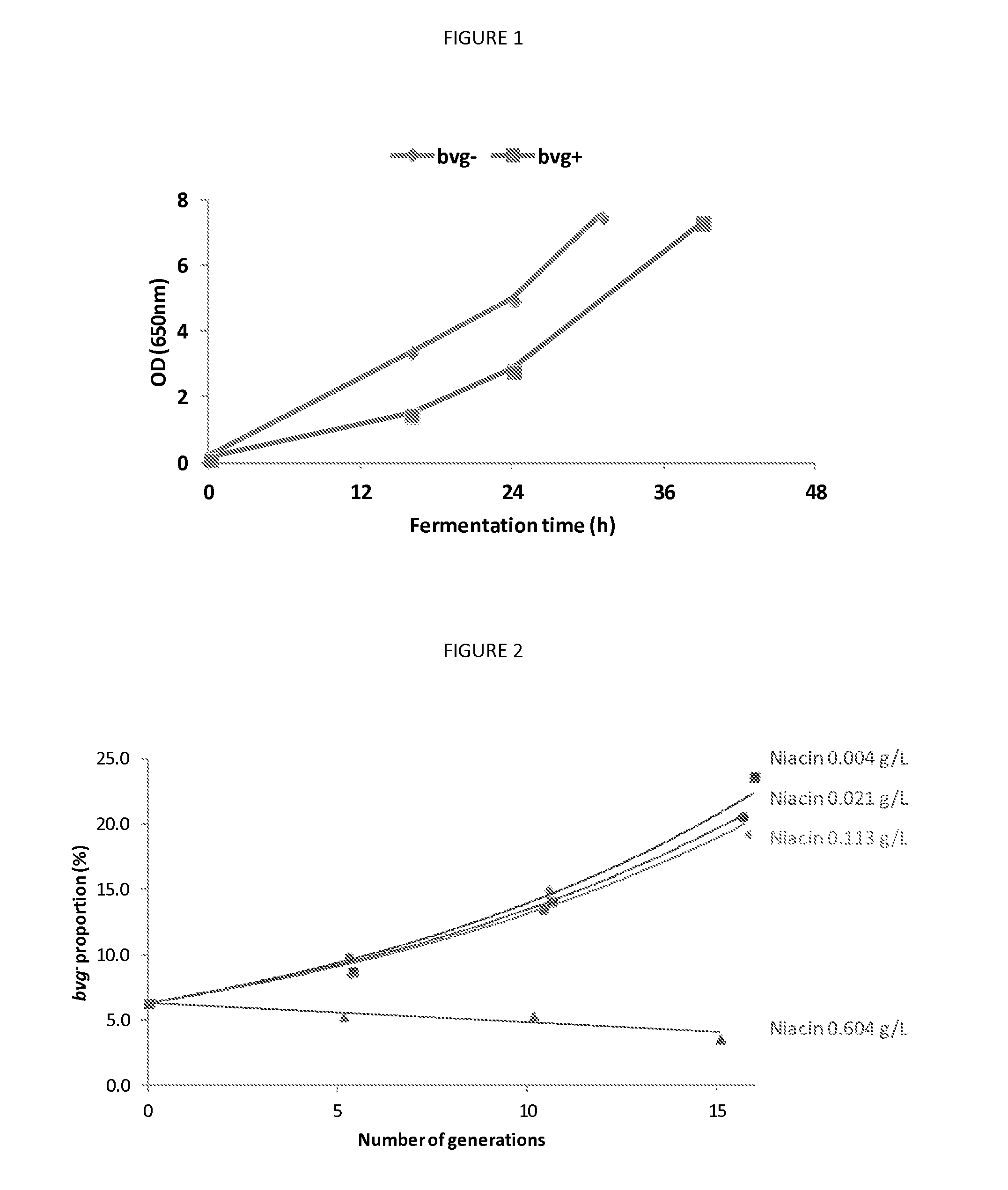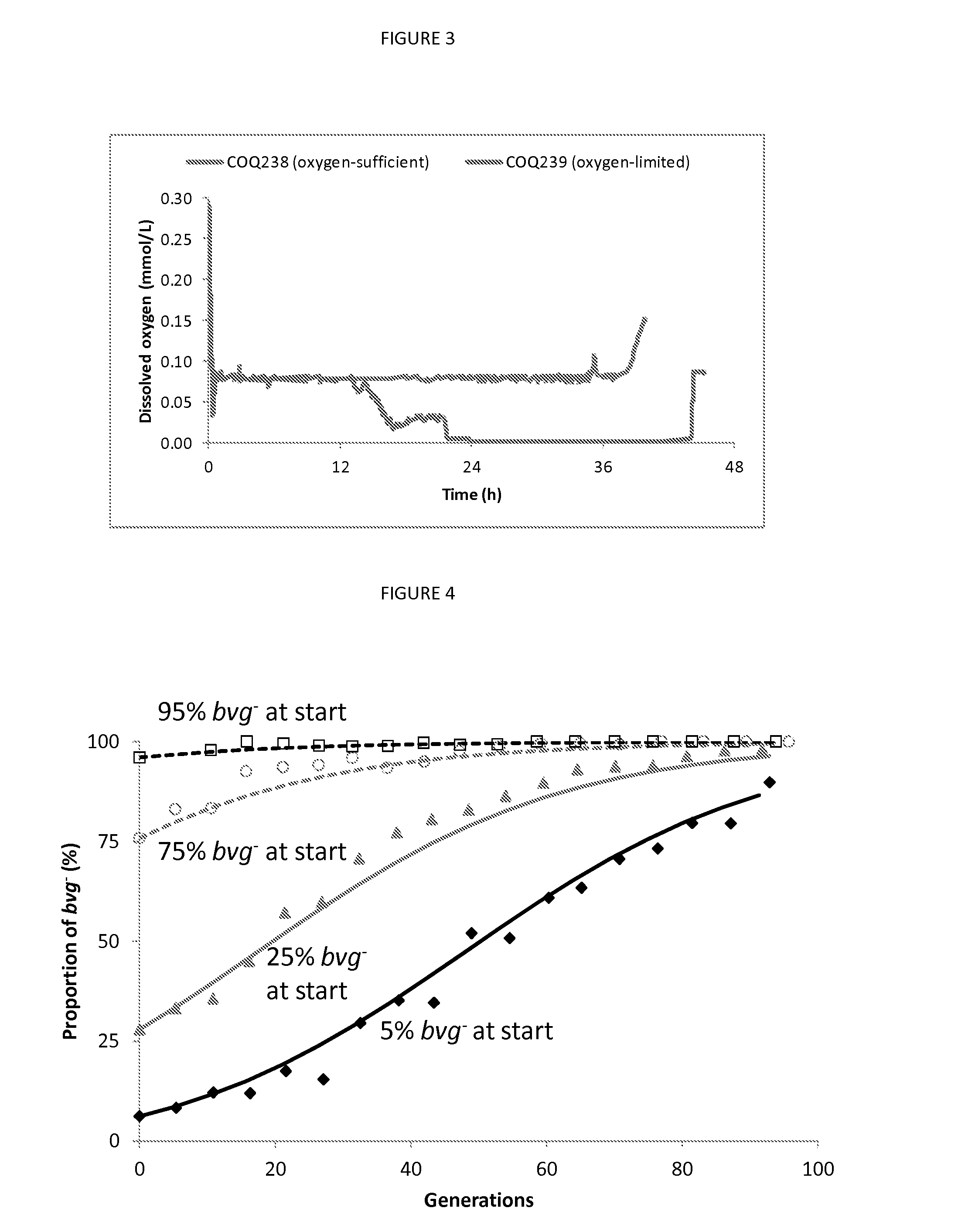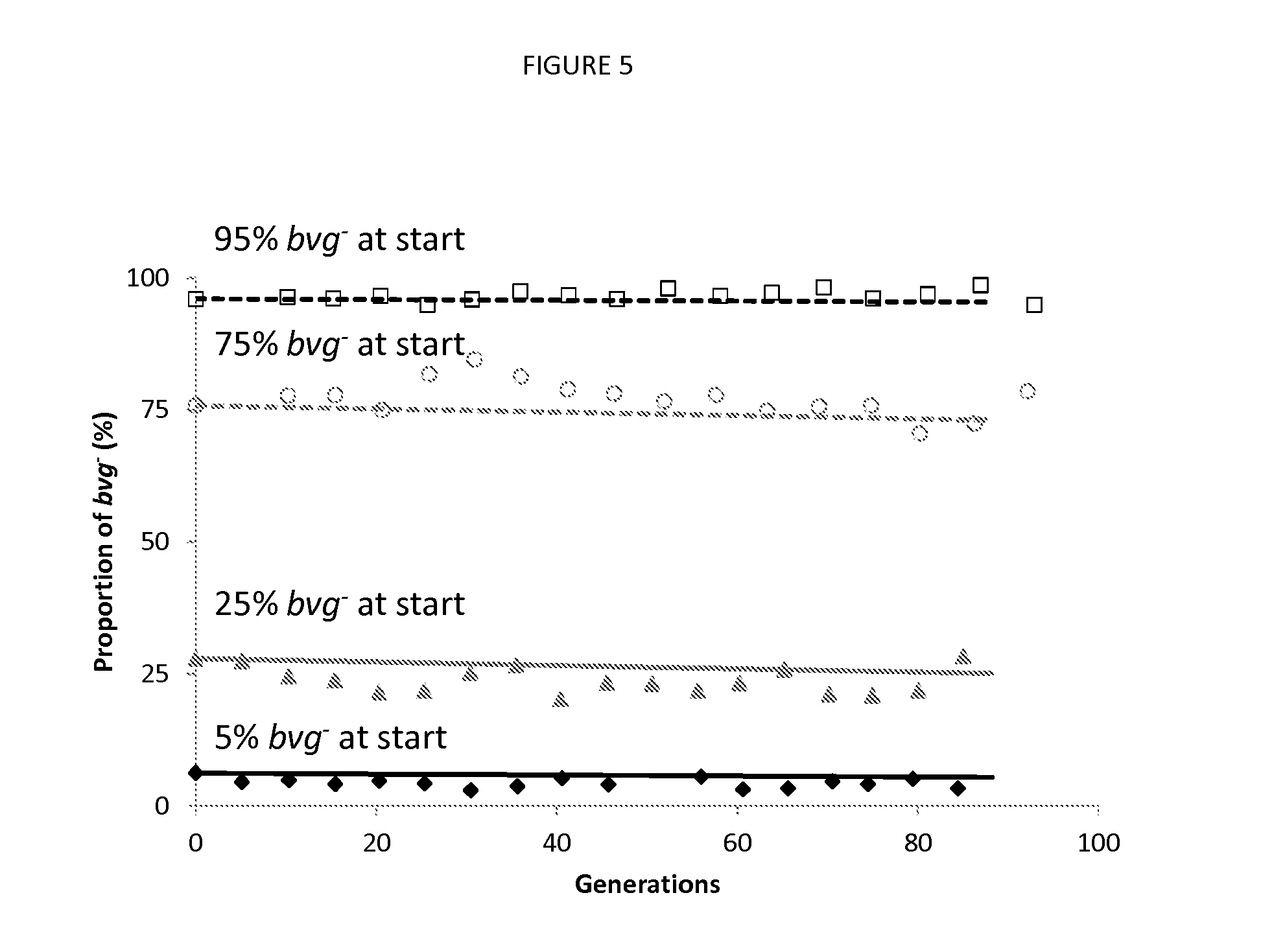Fermentation process
a fertilization process and process technology, applied in the field of fertilization process, can solve the problems of brain damage, high level of reactogenicity, and difficulty in di,
- Summary
- Abstract
- Description
- Claims
- Application Information
AI Technical Summary
Benefits of technology
Problems solved by technology
Method used
Image
Examples
example 1
Growth and Virulence Factor Production by Bordetella pertussis bvg+ and bvg− Mutants in 20 L-Scale Fermentation
[0120]A shake flask culture of B. pertussis was plated on Bordet-Gengou medium (containing 5% sheep blood), in order to be able to detect haemolytic (bvg+) and non-haemolytic (bvg−) colonies. One single bvg+ colony and one single bvg− colony were isolated from these plates, and used to perform 20 L-scale fermentations.
[0121]A first shake-flask pre-culture containing 7.5 ml fresh medium (adapted from Stainer and Scholte (J. Gen. Microbiol. 63:211-220 (1971)) by the addition of dimethyl- -cyclodextrin 1 g / L and acid casein hydrolysate 10 g / L, the replacement of L-cystine 40 mg / L with L-cysteine 40 mg / L, and the use of higher concentrations of Na-L-Glutamate (11.84 g / L), reduced glutathione (150 mg / L) and ascorbic acid (400 mg / L)) was inoculated with 109 B. pertussis CFUs and incubated at 35° C. (+ / −1° C.) and 150 rpm for 24 h (+ / −1 h) to produce a first pre-culture. The first...
example 2
Accumulation of bvg− Cells in a 20 L-Scale Fermentation of Bordetella pertussis
[0127]A 20 L-fermentation of Bordetella pertussis was performed as described in example 1, except that the first pre-culture was inoculated with 109 B. pertussis CFUs representing a 99:1 ratio of bvg+ to bvg− cells.
[0128]The proportion of bvg+ and bvg− cells was measured at the start and at the end of the 20 L-fermentation, by plating appropriate dilutions of the fermentation broth on BG medium containing 5% blood (Table 2). The proportion of bvg− cells increased as the number of generations increased.
TABLE 2Main fermentation parameters for 20 L-fermentations of B. pertussisbvg+ and bvg− isolates.COQ238Initial proportion of bvg− in first1%pre-cultureInitial proportion of bvg− in5%20 L-fermentorTotal fermentation time*35 hMaximum biomass (OD650 nm)6.9Final proportion of bvg− in20% 20 L-fermentor*The total fermentation time is defined as the time at which oxygen consumption decreases (as a consequence of g...
example 3
Effect of Modulating Compounds on the Take-Over of bvg− Cells During Serial Shake-Flask Cultures
[0129]Four series of cultures were performed in parallel in medium adapted from Stainer and Scholte (J. Gen. Microbiol. 63:211-220 (1971)) with the modifications described in example 1, each series containing MgSO4 (10 mM) and / or niacin (0 g / L or 0.604 g / L), as described in Table 3. For each series, the first shake-flask containing 7.5 ml fresh medium was inoculated with 109 B. pertussis CFUs representing a 99:1 ratio of bvg+ to bvg− cells. All subsequent shake-flask cultures contained 100 ml fresh medium. All cultures were incubated for 24 h (+ / −1 h) at 35° C. (+ / −1° C.). At the end of the third and fourth passages, the proportion of bvg+ and bvg− cells was measured by plating appropriate dilutions of the culture on BG medium containing 5% blood (Table 3).
[0130]In the absence of modulating concentrations of MgSO4 or niacin (series A), bvg− cells accumulated rapidly. The addition of eithe...
PUM
| Property | Measurement | Unit |
|---|---|---|
| Temperature | aaaaa | aaaaa |
| Temperature | aaaaa | aaaaa |
| Temperature | aaaaa | aaaaa |
Abstract
Description
Claims
Application Information
 Login to View More
Login to View More - R&D
- Intellectual Property
- Life Sciences
- Materials
- Tech Scout
- Unparalleled Data Quality
- Higher Quality Content
- 60% Fewer Hallucinations
Browse by: Latest US Patents, China's latest patents, Technical Efficacy Thesaurus, Application Domain, Technology Topic, Popular Technical Reports.
© 2025 PatSnap. All rights reserved.Legal|Privacy policy|Modern Slavery Act Transparency Statement|Sitemap|About US| Contact US: help@patsnap.com



